
Baron Avebury, of Avebury in the County of Wiltshire, is a title in the Peerage of the United Kingdom. It was created 22 January 1900 for the banker, politician and archaeologist Sir John Lubbock, 4th Baronet. He was succeeded by his eldest son, the second Baron. On his death the titles passed to his nephew, the third Baron. He was the son of Harold Fox Pitt Lubbock, fourth son of the first Baron, who died in 1971. The title then passed to the third Baron's first cousin, the fourth Baron, the son of Maurice Fox Pitt Lubbock, sixth son of the first Baron. The fourth baron was a Liberal Democrat politician and one of the ninety excepted hereditary peers who remained in the House of Lords after the passing of the House of Lords Act 1999. He was succeeded by his son, the fifth Baron, in 2016.
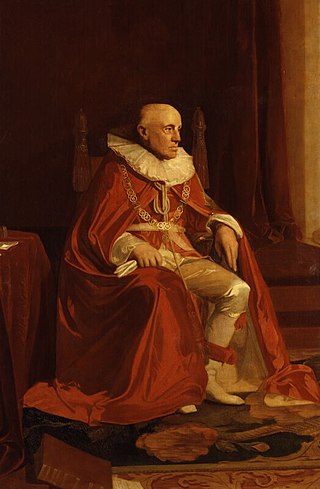
Sir George Hilaro Barlow, 1st Baronet, served as Acting Governor-General of India from the death of Lord Cornwallis in 1805 until the arrival of Lord Minto in 1807.
The Stronge baronetcy of Tynan was conferred in the Baronetage of the United Kingdom on 22 June 1803. The family were northern Irish landowners of Tynan Abbey, County Armagh, also possessing the residence of Lizard Manor, Aghadowey, County Londonderry.

The Bunbury Baronetcy, of Bunbury, Oxon and Stanney Hall in the County of Chester, is a title in the Baronetage of England. It was created on 29 June 1681 for Thomas Bunbury, Sheriff of Cheshire from 1673 to 1674 and the member of an ancient Cheshire family. His grandson, Henry, the third Baronet, and great-grandson, the fourth Baronet, both sat as Members of Parliament for Chester. The latter died unmarried at an early age and was succeeded by his younger brother, the fifth Baronet. He was a clergyman. On his death in 1764 the title passed to his eldest son, the sixth Baronet. He represented Suffolk in the House of Commons for over forty years but is best remembered for his marriage to Lady Sarah Lennox. He died childless in 1821 and was succeeded by his nephew, the seventh Baronet. He was the son of Henry Bunbury, younger son of the fifth Baronet. The seventh Baronet was a distinguished soldier and politician. His eldest son, the eighth Baronet, was High Sheriff of Suffolk in 1868, and Fellow of the Royal Society. He died childless in 1886 and was succeeded by his younger brother, the ninth Baronet. He was Liberal Member of Parliament for Bury St Edmunds. He died unmarried in 1895 and was succeeded by his nephew, the tenth Baronet. He was the son of Colonel Henry William St Pierre Bunbury, third son of the seventh Baronet. He served as High Sheriff of Suffolk in 1908 and was a Deputy Lieutenant of the county. On his death in 1930 the title passed to his son, the eleventh Baronet. He was High Sheriff of Suffolk in 1936 and was a Deputy Lieutenant of the county. His son, the twelfth Baronet, was High Sheriff of Suffolk in 1972. As of 2014 the title was held by the latter's second but eldest surviving son, the thirteenth Baronet, who succeeded in 1985.
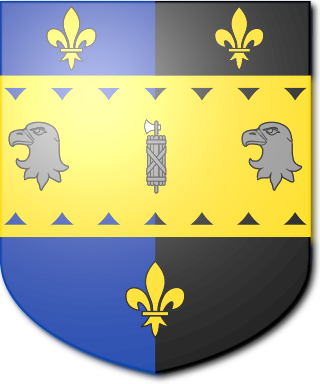
The Whitehead Baronetcy, of Highfield House in Catford Bridge in the County of Kent, is a title in the Baronetage of the United Kingdom. It was created on 26 November 1889 for James Whitehead, Lord Mayor of London between 1888 and 1889 and later member of parliament for Leicester. His younger son, the third baronet, was also a Member of Parliament.
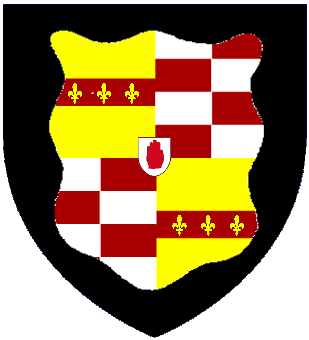
The Barrett-Lennard Baronetcy, of Belhus in the County of Essex, is a title in the Baronetage of the United Kingdom. It was created on 30 June 1801 for Thomas Barrett-Lennard, subsequently Member of Parliament for Essex South. He was the illegitimate son and testamentary heir of Thomas Barrett-Lennard, 17th Baron Dacre. He was succeeded by his grandson, the second Baronet, the son of Thomas Barrett-Lennard, Member of Parliament for Maldon. His son, the third Baronet, was childless and was succeeded by his younger brother, the fourth Baronet. This line of the family failed on the death in 1977 of his son, the fifth Baronet, who died without male issue. The late Baronet was succeeded by his third cousin once removed, the sixth Baronet. He was the son of Sir Fiennes Cecil Arthur Barrett-Lennard, Chief Justice of Jamaica, son of Captain Thomas George Barrett-Lennard, son of the first marriage of George Barrett-Lennard, son of John Barrett-Lennard, second son of the first Baronet. The sixth Baronet was a Catholic clergyman. As of 2014 the title is held by his second cousin, the seventh Baronet, who succeeded in 2007. He is the grandson of Trenchard Barrett-Lennard, son of the aforementioned George Lennard-Barrett by his second marriage. As of 31 December 2013 the present Baronet has not successfully proven his succession and is therefore not on the Official Roll of the Baronetage, with the baronetcy considered vacant since 2007.

The de Capell-Brooke Baronetcy, of Oakley in the County of Northampton, was a title in the Baronetage of the United Kingdom. It was created on 20 June 1803 for Richard de Capell-Brooke, a bencher of the Inner Temple and for 30 years a Colonel of the Northamptonshire Militia. Born Richard Supple, he was the son of Richard Supple, of Ahadoe, who in the 1750s married Mary, daughter of Arthur Brooke, of Great Oakley, Northamptonshire. In 1797 he inherited the Great Oakley estate from his great-uncle, Wheeler Brooke, and assumed at that time by sign manual and in obedience to the testamentary injunction of his great-uncle the surname Brooke as well as the original surname of his family, de Capell. He was succeeded by his eldest son, the second Baronet, who was a noted travel writer and Fellow of the Royal Society. The fifth Baronet was High Sheriff of Rutland in 1899, a deputy lieutenant of Northamptonshire and a justice of the peace and also unsuccessfully stood three times for the parliamentary seat of East Northamptonshire. On 4 July 1939 he was elevated to the Peerage of the United Kingdom as Baron Brooke of Oakley, of Oakley in the County of Northampton. The barony became extinct on his death in 1944 while he was succeeded in the baronetcy by Sir Edward de Capell-Brooke, the fifth Baronet. The baronetcy became extinct on the latter's death in 1968.

The Gibson, later Gibson-Carmichael, later Gibson-Craig-Carmichael Baronetcy, of Keirhill in the County of Edinburgh, is a title in the Baronetage of Nova Scotia. It was created on 31 December 1702 for Thomas Gibson, with remainder to his heirs male. The sixth Baronet assumed the additional surname of Carmichael. The eleventh Baronet was a Liberal politician. In 1912, he created Baron Carmichael, of Skirling in the County of Peebles, in the Peerage of the United Kingdom. The barony died in 1926, while he was succeeded in the baronetcy by his kinsman Sir Henry Thomas Gibson-Craig-Carmichael, 5th Baronet, of Riccarton, who became the twelfth Baronet of Keirhill and assumed the additional surname of Carmichael.
There have been four baronetcies created for persons with the surname Bell, all in the Baronetage of the United Kingdom. One creation is extant as of 2007.
The Blomefield Baronetcy, of Attleborough in the County of Norfolk, is a title in the Baronetage of the United Kingdom. It was created on 14 November 1807 for Major-General Thomas Blomefield. His great-grandson, the fourth Baronet, was assistant secretary to the Board of Trade from 1901 to 1908. He was succeeded by his grandson, the fifth baronet, Sir Thomas Edward Peregrine Blomefield. The title is currently held by the latter's son, Sir Charles Blomefield, the sixth baronet, who succeeded in 1984. Sir Charles was a fine art specialist at Christie's.

The Smith, later Smith-Marriott Baronetcy, of Sydling St Nicholas in the County of Dorset, is a title in the Baronetage of Great Britain. It was created on 1 June 1774 for John Smith, High Sheriff of Dorset in 1772. The second Baronet married Elizabeth Anne, daughter of Reverend James Marriott. The fourth Baronet assumed by Royal sign-manual the additional surname of Marriott. The fifth Baronet was High Sheriff of Dorset in 1873.

The Watson, later Kay Baronetcy, of East Sheen in the County of Surrey, was a title in the Baronetage of the United Kingdom. It was created on 5 December 1803 for the merchant and soldier Brook Watson, with remainder failing male issue of his own to his great-nephews William Kay and Brook Kay and the male issue of their bodies. Watson died unmarried and was succeeded according to the special remainder by his great-nephew William Kay, the third Baronet. The title became extinct in 1918, when the sixth baronet was killed in action on the Western Front.
The Domville Baronetcy, of St Alban's in the County of Hertford, was a title in the Baronetage of the United Kingdom. It was created on 28 July 1814 for William Domville, Lord Mayor of London from 1813 to 1814. He was a descendant of William Domville, elder brother of Gilbert Domvile, ancestor of the Domvile baronets of Tempoleogue. The title became extinct on the death of the seventh Baronet in 1981.

The Stewart baronetcy, of Athenree in the County of Tyrone, was created in the Baronetage of the United Kingdom on 21 June 1803 for John Stewart. He was Attorney-General for Ireland from 1799 to 1803 and represented County Tyrone in the British House of Commons. The second Baronet also sat as Member of Parliament for County Tyrone. The sixth Baronet was Deputy Lieutenant of County Tyrone in 1971.

The Cholmeley baronetcy, of Easton in the County of Lincoln, was created in the Baronetage of the United Kingdom on 4 March 1806 for Montague Cholmeley, subsequently Member of Parliament for Grantham. His son, the second Baronet, sat as Member of Parliament for North Lincolnshire. He was succeeded by his son, the third Baronet, who also represented Grantham as MP. His grandson, the fifth Baronet, was High Sheriff of Lincolnshire in 1961 and a Vice-Lord-Lieutenant and Deputy Lieutenant of the county.

The Young baronetcy, of Bailieborough Castle in the County of Cavan, was created in the Baronetage of the United Kingdom on 28 August 1821 for William Young. He was a Director of the East India Company. The 2nd Baronet served as Governor General of Canada from 1869 to 1872 and was raised to the peerage as Baron Lisgar, of Lisgar and Bailieborough in the County of Cavan, in 1870. The peerage became extinct on his death in 1876; while he was succeeded in the baronetcy by his nephew, the 3rd Baronet.

The Dunbar baronetcy, of Mochrum, Wigtownshire, was created for James Dunbar in the Baronetage of Nova Scotia on 29 March 1694. He married, firstly, Isabel Nicholson, daughter of the 2nd of the Nicolson Baronets of Carnock (1636), and through her came into the estate of Plean, Stirlingshire.
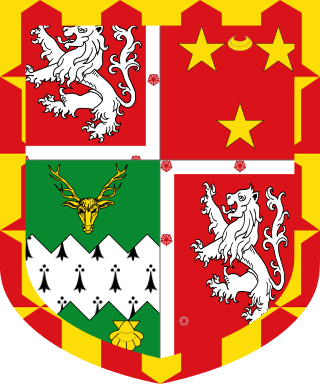
The Dunbar baronetcy of Hempriggs, Caithness, was created for Hon. James Dunbar, formerly James Sutherland, on 10 or 21 December 1706. He was a younger son of James Sutherland, 2nd Lord Duffus, and brother of the attainted Jacobite Kenneth Sutherland. He married Elizabeth Dunbar, daughter and heiress of Sir William Dunbar, 1st Baronet of the Dunbar baronets of Northfield (1700).

The Dundas baronetcy, of Beechwood in the County of Midlothian, was created in the Baronetage of the United Kingdom on 24 August 1821 for Robert Dundas. He was succeeded by his son David, the 2nd Baronet; three of his six sons, the 3rd, 4th and 5th Baronets, all succeeded in the title. The last was succeeded by his son, the 6h Baronet. He was childless and on his death in 1981 at the age of 99, the title became extinct.
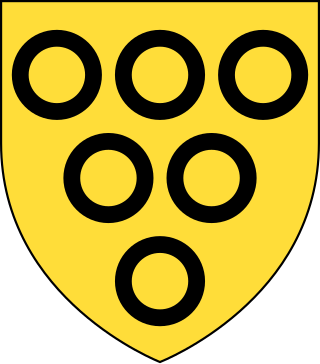
The Lowther baronetcy, of Swillington in the County of York, was created in the Baronetage of the United Kingdom on 3 November 1824 for John Lowther. He was the second son of Sir William Lowther, 1st Baronet, of Little Preston, and brother of William Lowther, 1st Earl of Lonsdale (1807). His seat was Wilton Castle.
















